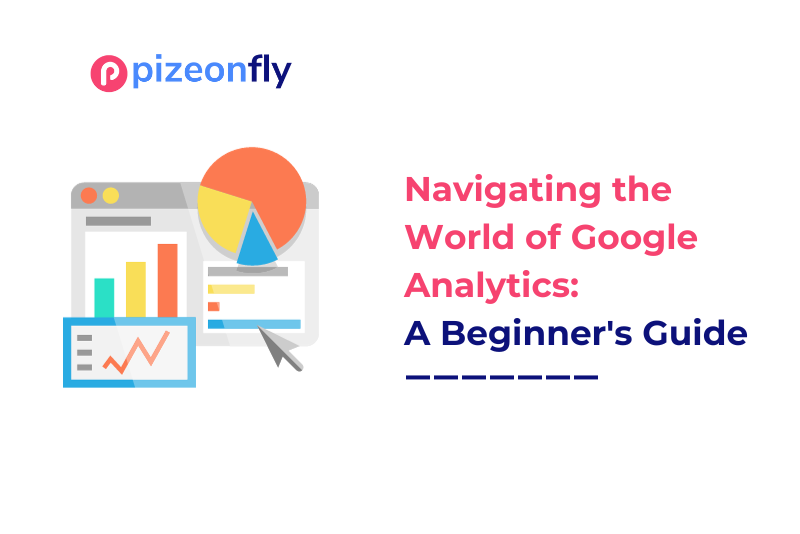
Navigating the World of Google Analytics: A Beginner’s Guide
September 28, 2023
Is SEO A Good Career? 2025 Guide
January 31, 2025Graphic Design Mastery
Graphic design is an essential skill in today’s digital world, offering creative and professional opportunities. Whether you’re crafting social media posts, building a portfolio, or creating business materials, the right tools are vital. Beginners can enhance their skills with user-friendly tools and by exploring the best graphic design courses in Delhi, like those offered by Pizeonfly. These graphic design courses provide hands-on training to help you master industry essentials. Here’s a list of the best tools to kickstart your design journey.
1. Canva
When it comes to user-friendly design tools, Canva leads the pack. Known for its simplicity and versatility, Canva is ideal for beginners who want to create professional-looking designs without any prior experience. With Canva template free options and a variety of Canva templates PPT, it’s perfect for crafting everything from social media posts to professional presentations.
Features:
- Thousands of customizable templates for social media, presentations, posters, and more.
- Drag-and-drop functionality makes it easy to add elements.
- Free version available with premium features in Canva Pro.
- Access to a rich library of images, fonts, and design elements.
Why Beginners Love It:
Canva’s intuitive interface and pre-designed templates eliminate the steep learning curve. It’s perfect for creating quick, polished designs effortlessly.
2. Adobe Express (Formerly Adobe Spark)
Adobe Express simplifies graphic design, making Adobe’s renowned tools accessible to beginners. It focuses on helping users create stunning visuals with ease, offering features like Adobe Express remove bg, which allows users to easily remove backgrounds from images. You can also explore options like Adobe Express animation and Adobe Express animate your voice for adding dynamic elements to your designs. Although some might search for Adobe Express mod apk, it’s important to stick to the official versions for a safe and reliable experience.
Features:
- Ready-made templates for web stories, social posts, and more.
- Cloud storage for projects.
- Easy resizing options for different platforms.
- Seamless integration with Adobe Creative Cloud for advanced users.
Why Beginners Love It:
Adobe Express brings the power of Adobe into an easy-to-use package, helping new designers create graphics without diving into complex software like Photoshop.
3. Gravit Designer
Gravit Designer is a vector-based tool that caters to beginners and professionals alike. It offers an array of design options for illustrations, UI designs, and more. With the Gravit Designer free version available, users can get started without any upfront cost. Additionally, Gravit Designer for Windows makes it accessible for a wide range of users. If you’re wondering how to download Gravit Designer, the process is simple and quick, allowing you to begin your design journey in no time.
Features:
- Cloud-based platform with offline access.
- Intuitive tools for creating logos, icons, and illustrations.
- Free version with affordable Pro upgrades.
- Advanced typography options and editing tools.
Why Beginners Love It:
Gravit Designer bridges the gap between simplicity and advanced design. Beginners can start with basic features and explore more as they gain confidence.
4. Pixlr
Pixlr is a lightweight photo editing tool ideal for those new to graphic design. It’s a browser-based application, meaning no downloads are required. However, if you prefer using it on your desktop, you can also pixlr download for PC for offline editing. With its Pixlr AI features, the tool offers smart, quick adjustments that simplify the editing process.
Features:
- Intuitive photo editing features like cropping, resizing, and filters.
- AI-powered tools for quick adjustments.
- Multiple modes: Pixlr X (basic editing) and Pixlr E (advanced editing).
- Free and premium plans available.
Why Beginners Love It:
Pixlr provides a great starting point for those looking to enhance photos and add creative elements without needing complex software.
5. Inkscape
Inkscape is a free, open-source tool for vector graphics. It’s an excellent choice for beginners who want to create detailed illustrations, logos, and diagrams. You can also explore Inkscape on Android and easily Inkscape download options for both PC and Mac. For users looking to download other design tools, Pixlr download for PC is also available.
Features:
- Scalable vector graphics (SVG) support.
- Extensive library of drawing tools.
- Cross-platform compatibility (Windows, Mac, Linux).
- Active community support and tutorials.
Why Beginners Love It:
Although it has a steeper learning curve than Canva or Pixlr, Inkscape is a robust tool for budding graphic designers ready to explore professional features.
6. Crello (Now VistaCreate)
Crello is a beginner-friendly graphic design platform similar to Canva, with a focus on animated designs, making it ideal for social media creators. In the Crello vs Canva debate, Crello shines with its animation tools and Crello poster maker feature, perfect for creating engaging visuals. The Crello login offers easy access to your projects, and you can start with Crello free graphic design options.
Features:
- Templates, animations, and stock media.
- Drag-and-drop editor.
- Free and premium versions available.
- Pre-designed formats for social media, ads, and presentations.
Why Beginners Love It:
The ability to create animations and videos alongside static graphics sets Crello apart, making it a versatile tool for new designers.
7. Figma
Figma is a cloud-based design tool known for UI/UX design, but it’s also great for beginners in graphic design. What is Figma? It’s a collaborative platform perfect for creating designs like a Figma logo, and it’s easy to download Figma for both desktop and browser use. With a Figma price that offers a free plan with strong features, it’s an ideal tool for beginners.
Features:
- Real-time collaboration.
- Browser-based with offline desktop apps.
- Free plan available.
Why Beginners Love It:
Figma’s clean interface and collaboration features make it easy to learn design while working on projects with others.
8. Krita
Krita is a free, open-source tool designed for digital painting and illustration. It’s particularly suitable for aspiring artists who want to explore digital drawing, with features like Krita AI tools to enhance creativity. If you’re looking to start your digital art journey, you can easily download Krita free and dive right in.
Features:
- Customizable brushes for various painting styles.
- Support for PSD files.
- Advanced layer and mask tools.
- Active community with resources for beginners.
Why Beginners Love It:
Krita is an excellent starting point for those interested in digital art, offering powerful tools without the hefty price tag of premium software.
9. CorelDRAW
CorelDRAW is a powerful graphic design tool, ideal for both beginners and experienced designers, known for its vector illustration and layout capabilities. It’s perfect for creating CorelDRAW design logos, design images, and exploring CorelDRAW design samples. With options like CorelDRAW free download, CorelDRAW X7, and the ability to convert CorelDRAW to JPG, it’s a versatile tool for all your design needs.
Features:
- Vector Illustration for logos and layouts.
- User-Friendly Interface with advanced tools for pros.
- Customizable Workspaces for a personalized experience.
- PowerTRACE Technology to convert bitmaps to vector graphics.
Why Beginners Love It:
CorelDRAW’s intuitive interface and advanced features make it easy for beginners to create professional designs quickly.
Also Read: How to Use Social Media to Boost Your Online Presence
Tips for Choosing the Right Graphic Design Tool
- Identify Your Goals: Are you creating social media content, illustrations, or branding materials? Choose a tool that aligns with your needs.
- Start Simple: Opt for tools like Canva or Adobe Express if you’re new to design.
- Explore Free Options: Many tools offer free versions that are perfect for beginners. Upgrade as your skills improve.
- Utilize Tutorials: Platforms like YouTube and official blogs often provide step-by-step guides for beginners.
- Experiment: Don’t hesitate to try multiple tools to find the one that suits your workflow.
Conclusion
Starting your journey in graphic design doesn’t have to be intimidating. With the right tools, you can create professional-quality designs and develop your skills. From beginner-friendly platforms like Canva and Crello to advanced tools like Inkscape and Figma, there’s something for everyone.
The best approach is to explore these tools, practice regularly, and let your creativity shine. Before you know it, you’ll be designing like a pro!










